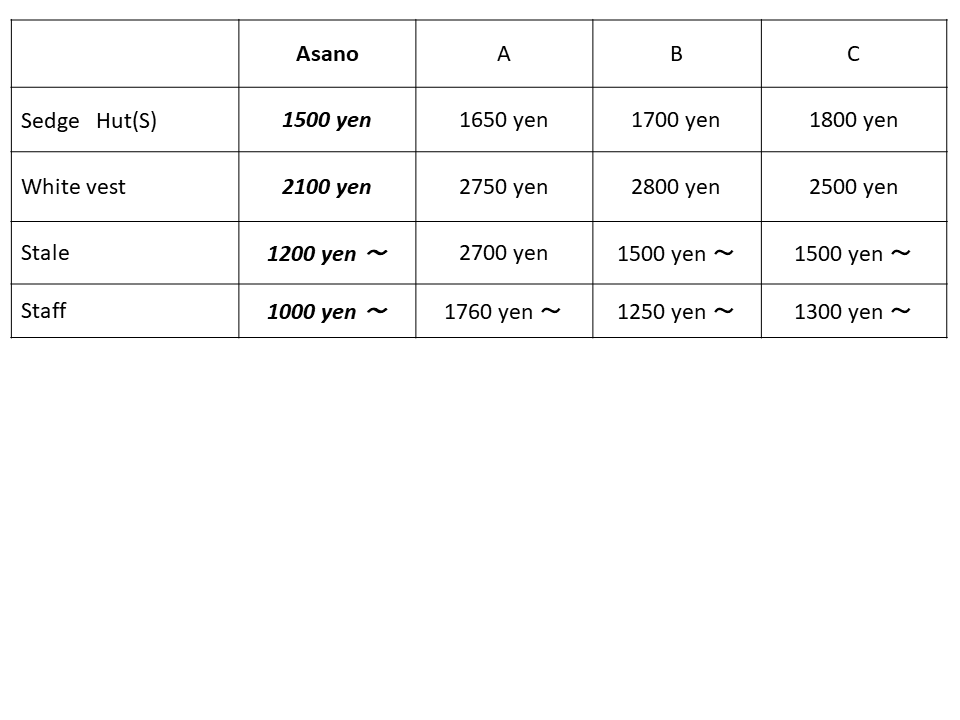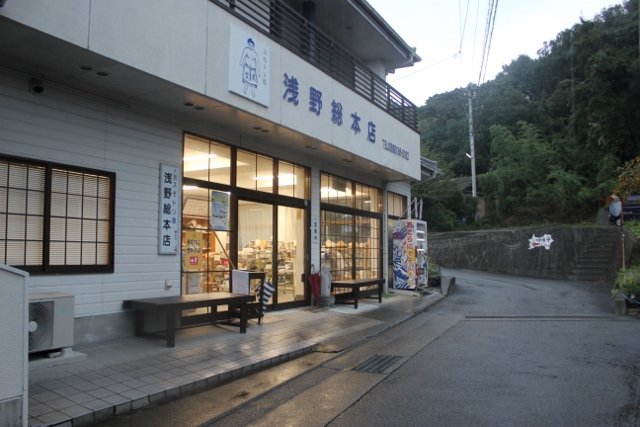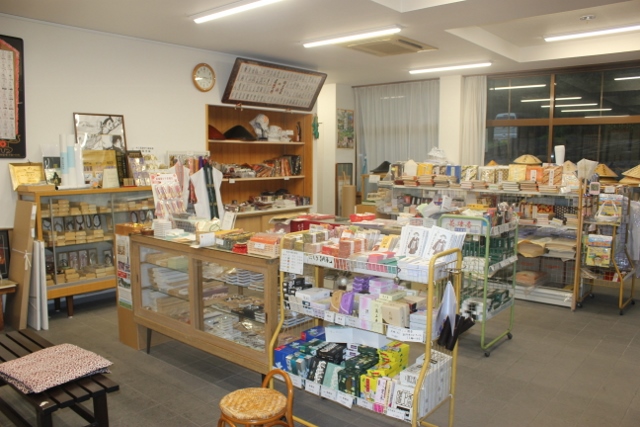Date:2020/02/28
Pilgrim Attire
You can use any or all of the following; however, if you wear the white vest, people will recognize and welcome you as a pilgrim. People will assist you in your journey and you can have more chances to talk with local people. You can buy all of these things at Temple 1, Ryōzenji and at many temples and stores along the route.
By wearing the pilgrim attire, you fulfill one of the three mysteries (sanmitsu = 三密), namely acts, words and thoughts, that are integral parts of the ascetic training within Mikkyō Buddhism.
Sedge hat (sugegasa / 菅笠) (from ¥1,500)
It is useful to block the rain or sun. It is not necessary to remove one’s hat when worshipping at a sacred site, whether inside or outside, or when talking with a priest. The Sanskrit mark should face forward.
White vest (hakui /白衣・白装束) (from ¥2,000)
The white clothing worn by the pilgrim represents purity and innocence. Some people say that, in the past, it also held the meaning of a death shroud, symbolizing that the pilgrim was prepared to die at any time. Some people receive the temple stamp on an extra vest. This becomes a family treasure and is later put on the deceased before cremation. However, some temples will only give you one stamp, so if you carry a stamp book or scroll, you may not be able to have the vest stamped at every temple.
Bag (sanyabukuro/山谷袋 ) (from ¥1,000)
Things necessary for the journey, such as sutras, stamp book, etc are put in here.
Prayer beads (juzu / 数珠) (from ¥2,000)
To the Japanese, this is a very familiar religious object. If one holds this with one’s hands together, it is said that the illusions of one’s mind will disappear and one will obtain merit.
Name slips (osamefuda/ 納札)(white — packs of 100/200)
You write your name, address, the date, and a wish on this. It is placed in the name slip box at the both the Main Hall and Daishi Hall. In addition, if somebody gives you a gift (osettai) you should give them a name slip in addition to saying thanks.
The color of the name slip depends on the number of times you have done the pilgrimage.
1-4 times: white
5-7 times: green
8-24 times: red
25-49 times: silver
50-99 times: gold
100+ times: brocade
Stamp book (nōkyōchō / 納経帳) (from¥1,500)
This acts as proof that you have visited each temple. Take it to the temple office after finishing worshiping at that temple. Fee: 300 yen per temple.
Bell (jirei / 持鈴) (from ¥1,000)
You should ring the bell after reciting each sutra.
Stole (wagesa / 輪袈裟) (from ¥1,200)
The stole is part of the attire that a priest wears; however, this has been adapted for traveling. Take it off when going into a washroom and when eating meals.
Staff (kongōzue / 金剛杖 ) (¥1,200)
The staff is said to be the embodiment of Kõbō Daishi, who guides and protects pilgrims. Formerly, it may have been used as a grave marker for pilgrims who passed away while on the pilgrimage route.
Rules:
1. When you stop for a rest, make sure the staff is taken care of before yourself. Put it in a safe, clean place.
2. When you reach the place where you are going to spend the night, wash the end of the staff. When you stay at an inn, there may be a special holder, usually in the genkan (entryway). If not, place it in the tokonoma (the alcove in your room that normally has a hanging scroll or painting).
3. There is a belief that Kõbō Daishi might be sleeping under a bridge, so do not tap the staff when going over any bridge.
4. The end of the staff will fray over time. Do not trim it with a knife. However, using a stone or other blunt object is allowed.
Recommended store.
One particularly good place to shop for pilgrim goods is Sumotoriya ASANO Sohonten with the trademark of sumo wrestler, near #10 Kirihataji. They have high-quality goods and will deliver them to near a hotel of #1 Ryozenji . They have an English website and the owner speaks English.



